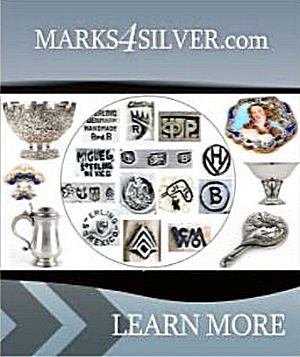STERLING SILVER AND TYPES OF SILVERPLATE
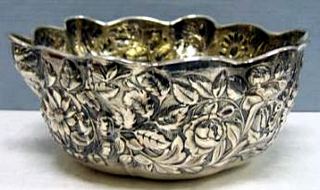
Silver is a popular metal used in jewelry and decorative items for its unique shine and durability. However, not all silver is created equal. When researching silver antiques or collectibles, it's important to understand the distinctions between various types of silver to make informed purchasing decisions.
Differences between Sterling Silver and Silverplate
One of the most common terms associated with silver is "sterling silver." Sterling silver is composed of mostly solid silver, with a small amount of copper mixed in to make it harder and more durable. This alloy is known for its beautiful sheen and is often used in high-quality jewelry and silverware. In fact, the United States government adopted the sterling silver standard in 1852, which specifies a composition of 92.1% silver and 7.9% copper.
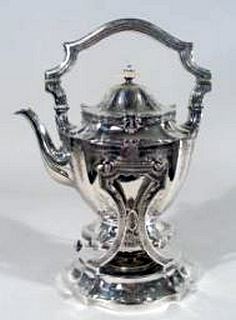
In contrast, silver-plated items have only a thin surface layer of silver over a base metal such as copper, nickel silver, stainless steel, brass, or bronze. While silver-plated items can be beautiful and affordable, they are not as durable as sterling silver and may require more maintenance over time.
It is therefore important to understand the differences between "alloy" and "plated." An alloy is a composite metal made up of two or more pure metals fused together. In the case of sterling silver, silver and copper are combined to create a harder, more durable metal. On the other hand, plated metals have a thin layer of silver deposited onto a base metal to give it the appearance of solid silver. While plated items may look like solid silver, they are not as valuable or durable as sterling silver.
In addition to sterling silver and silver-plated items, there are also other types of silver to be aware of. "Fine silver" refers to items made of at least 99% pure silver, while "coin silver" refers to a minimum of 90% silver content. Understanding these distinctions can help you make informed decisions when shopping for silver items.
Nickel-Silver, German Silver, Paktong, and EPNS
When it comes to silverplate, you may come across the term "Nickel Silver" or "German Silver." But, despite its name, Nickel Silver actually contains no silver at all. Rather, it is an alloy made up of copper, nickel, and zinc in varying proportions, typically 2:1:1 or 3:1:1. This alloy is similar to Paktong, which was imported from China to Europe before the 19th century when nickel became more readily available from colonies.
Nickel Silver was first developed in Saxe-Meiningen, Germany in 1824, which is why it is sometimes referred to as "German Silver." However, despite its German origins, Nickel Silver is used extensively as a base metal for silver-plated items. In fact, you may come across the abbreviation EPNS (Electro Plated Nickel Silver) or EPGS (Electro Plated German Silver) when shopping for silver-plated items.
While Nickel Silver may not contain any silver, it is still a popular and affordable option for those seeking the look of silver without the high price tag. Its unique blend of copper, nickel, and zinc gives it a distinct color and shine that is often compared to silver. Whether you're in the market for silver-plated items or simply interested in metallurgy, Nickel Silver is an interesting and versatile alloy to consider.
Sheffield Plate, French Plate, and other Silver Plating Methods
As mentioned, silver plating is a process of depositing a layer of silver onto a base metal to create an item that has the appearance of silver, but at a lower cost. There have been several methods of silver plating over the years, each with its own advantages and disadvantages.
One of the earliest and most successful methods of silver plating was Sheffield Plate. This method was patented for industrial use by Thomas Bolsover of Sheffield in 1742. The technique involved rolling a layer of silver onto a layer of copper, sometimes on both sides, to produce a very compact and large silver sheet that was still thin enough to be malleable for silversmiths when forming intricate designs. The term "Sheffield Plate" became popular in the 1770s, and was later referred to as "Old Sheffield Plate" to distinguish it from other methods developed after the 1830s. Most surviving antique Sheffield Plate items are double plated.
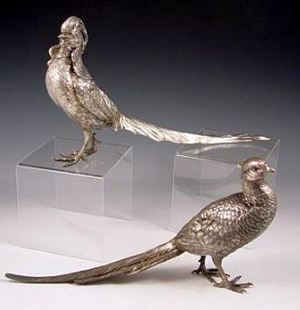
Due to repeated increases in UK taxation for solid or sterling silver between 1784 to 1815, other methods of silver plating were developed that were less expensive and easier to replicate in industrial quantities. Most of these techniques employed the use of fine and very thin layers of silver, sometimes referred to as "Silver Leaf," that were pressed against the base metal 3-5 layers at a time and then heated and burnished to a smooth finish. This method is now known as "French Plating," because it was popular mostly with French platers during the 18th century. Other similar forms of silver plating were also developed around the same time, including Roberts Plate ca 1830, British Plate ca 1835, and Merry Plate in 1836.
Transition to Electro-Plating
The most important change in silver plating came about with the invention of Electro-Plating. This method involves placing the item to be plated along with a small ingot of solid silver in a bath of mild acid and applying electric current. This set-up enabled an evenly uniform deposit of solid silver on the plated item, and varying the current and time during the process allowed for very precise control of the thickness of the plated silver. Electroplating was first discovered by John Wright of Birmingham in 1840, but was officially patented by Elkington & Co. around the same time. It has since been in extensive use and has remained the dominant way of plating silver to this day. Most electroplated wares have a plating thickness of about 3 - 30 microns, whereas Flashed or Silver-Washed wares have less than 3 microns.
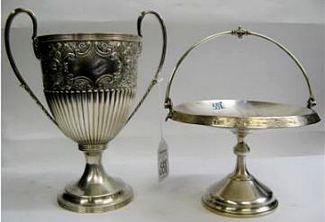
Silver-plated items were not required by law to have hallmarks. However, many companies used their own logos and often included the type of plating that was applied on each piece, usually as initials EPS, EP, EPNS, etc. This practice eventually became the norm and now most silverplate found in the market is signed this way along with makers' trademarks.
Unfortunately, some companies intentionally signed their wares with symbols that are very similar to authentic sterling silver hallmarks in order to gain market acceptance, commonly referred to as pseudo-marks and researching these marks carefully is important to distinguishing between sterling silver and silverplate.
Other terms related to Silver include:
Standard Silver Plate: The equivalent of using 2 troy ounces of Pure Silver for every 144 Silver spoons being electroplated
Quadruple Plate: The use of 4 times the Standard electroplating amount of Pure Silver, i.e. 8 oz for every 144 silver spoons
Britannia Silver: A Sterling Silver alloy of 0.9584 Pure Silver Fineness
90g or 90G or G90 or 90 or Hard Plating: Refers to electroplating of over 30 microns thickness; found mostly on German Cutlery & Utilitarian Flatware ca 1920s
onwards.
Unlock the true value
of your collection with our comprehensive research guides from identifying makers' marks to appraising all kinds of
antiques and collectibles.
Our up-to-date information will give you an accurate understanding of your items' worth. Don't miss out on this
valuable resource - visit our research tools today!
Search our price guide for your
own treasures




